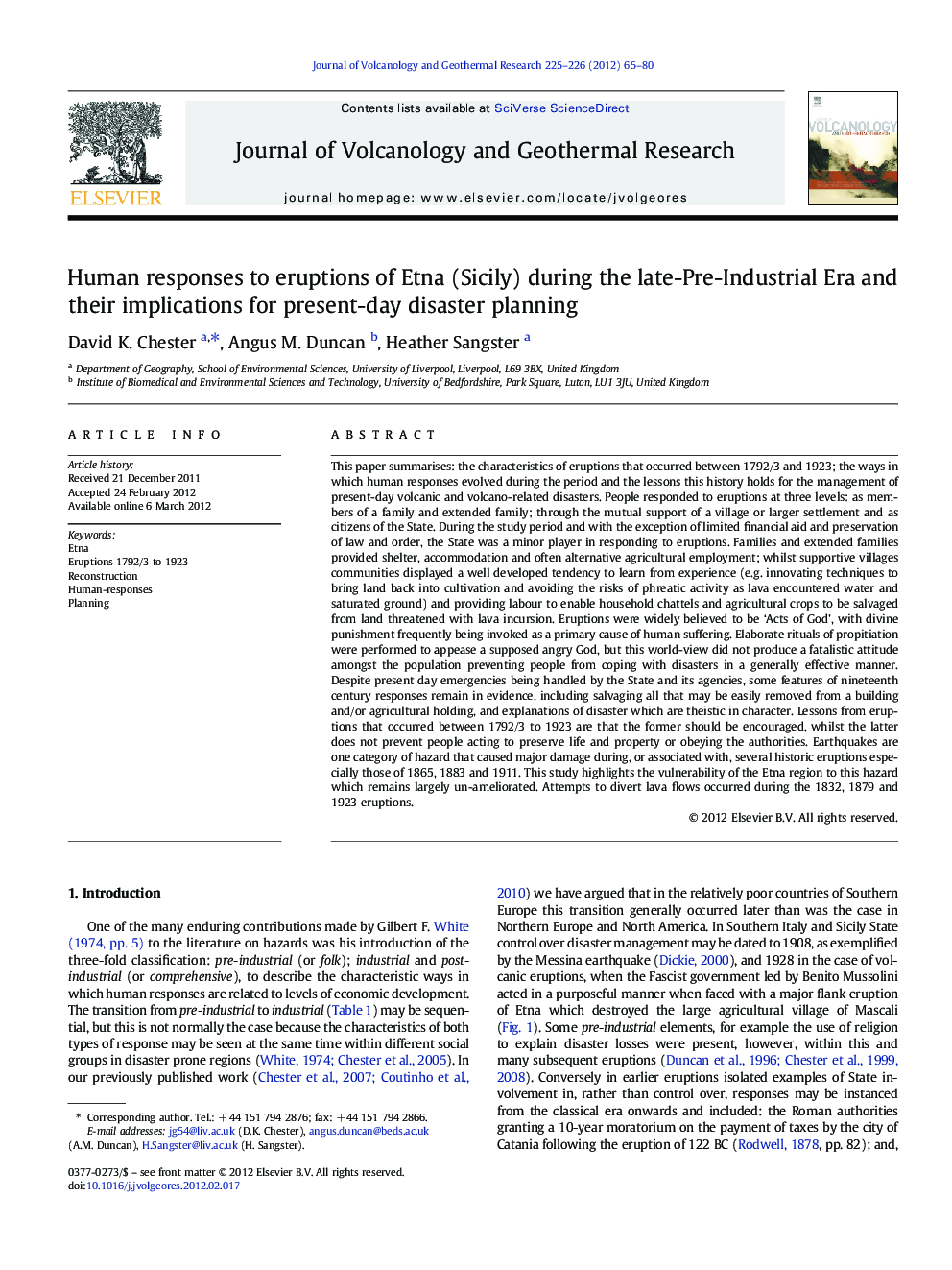| کد مقاله | کد نشریه | سال انتشار | مقاله انگلیسی | نسخه تمام متن |
|---|---|---|---|---|
| 4713336 | 1638384 | 2012 | 16 صفحه PDF | دانلود رایگان |

This paper summarises: the characteristics of eruptions that occurred between 1792/3 and 1923; the ways in which human responses evolved during the period and the lessons this history holds for the management of present-day volcanic and volcano-related disasters. People responded to eruptions at three levels: as members of a family and extended family; through the mutual support of a village or larger settlement and as citizens of the State. During the study period and with the exception of limited financial aid and preservation of law and order, the State was a minor player in responding to eruptions. Families and extended families provided shelter, accommodation and often alternative agricultural employment; whilst supportive villages communities displayed a well developed tendency to learn from experience (e.g. innovating techniques to bring land back into cultivation and avoiding the risks of phreatic activity as lava encountered water and saturated ground) and providing labour to enable household chattels and agricultural crops to be salvaged from land threatened with lava incursion. Eruptions were widely believed to be ‘Acts of God’, with divine punishment frequently being invoked as a primary cause of human suffering. Elaborate rituals of propitiation were performed to appease a supposed angry God, but this world-view did not produce a fatalistic attitude amongst the population preventing people from coping with disasters in a generally effective manner. Despite present day emergencies being handled by the State and its agencies, some features of nineteenth century responses remain in evidence, including salvaging all that may be easily removed from a building and/or agricultural holding, and explanations of disaster which are theistic in character. Lessons from eruptions that occurred between 1792/3 to 1923 are that the former should be encouraged, whilst the latter does not prevent people acting to preserve life and property or obeying the authorities. Earthquakes are one category of hazard that caused major damage during, or associated with, several historic eruptions especially those of 1865, 1883 and 1911. This study highlights the vulnerability of the Etna region to this hazard which remains largely un-ameliorated. Attempts to divert lava flows occurred during the 1832, 1879 and 1923 eruptions.
► Innovative use of archival data sources.
► Detailed reconstruction of eruptions 1792/3 to 1923.
► Detailed analysis of human responses during the study period.
► Implications of this historical study for present-day hazard planning.
Journal: Journal of Volcanology and Geothermal Research - Volumes 225–226, 1 May 2012, Pages 65–80